Backlinks remain among the most important ranking factors. Google and industry studies uphold a connection to success.
In fact, with everything else — content’s quality and on-page optimization, for example — being equal, it is a page with stronger backlinks that will be more likely to rank higher.
For that reason, link building remains an essential SEO activity.
But there is a catch.
To build links, you must do more than find potential link opportunities and secure those backlinks. You must also understand your link profile and your competitor backlinks to get an idea of what links you’ll need to outrank them.
We call this process backlink analysis, and in this post, you’ll learn all about it.
We’ll discuss what backlink analysis is, what data you should collect to complete it, and how to evaluate your link profile.
Let’s begin.
What is Backlink Analysis?
Backlink analysis is a process in which you evaluate your backlink data, as well as your competitors’ link profiles.
You conduct backlink analysis for three main reasons:
Reason #1.
Evaluate your existing links helps you understand why your content ranks where it does. The analysis will help you predict your site’s ability to rank for its target phrases.
Now, I admit that each keyword is different, and as a result, you must evaluate your chances of ranking for each phrase individually. Understanding your current link profile, however, will make this task much easier.
You should come away breaking down your top link “types.” For example, PR coverage, partner websites, or links to a particular tool or resource on your site. The patterns tend to emerge after an audit of a handful of linking sites.
Reason #2.
Backlink analysis will help you spot potentially harmful links to your site and disavow them before they affect your rankings and search visibility.
There could be many reasons why your site has acquired spammy links. Some low-quality sites may have scraped your content, or, in an extreme case, you may have fallen prey to a negative SEO attack.
A regular backlink analysis will highlight any such threat and eliminate it before it becomes a problem.
Reason #3.
The competitor analysis will reveal what links contribute to their success. Such knowledge, in turn, will help you understand what it will take to outrank your competitors in the search engine results.
What Information to Collect for Backlink Analysis
Before I show you how to analyze your link profile, let’s discuss what sort of information we’ll be reviewing in the process.
A quick note: the link data I’ve listed below will help you evaluate both your own, and any of your competitors’ backlink profiles.
For this demonstration, I’ll be using our platform, seoClarity, to show you the data. The platform combines many functions of SEO tools into a single platform making it easier to act on data found in a backlink audit.
To access the same information for your or your competitors’ sites, go to the Backlinks section, our backlink checker tool, and type in the URL of the website you’d like to evaluate.

In return, the platform will deliver relevant data. Let's breakdown the different views.
The Total Number of Unique Links
This metric reveals how many links, in total, a site has acquired to date. It's worth it to note that this is not the strength of those links — only the total number.
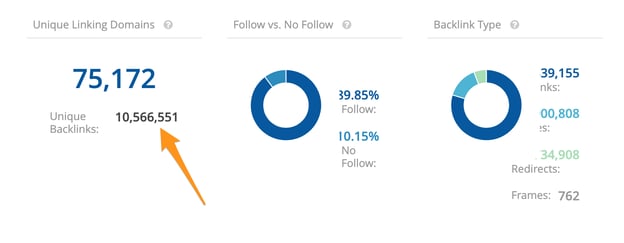
The Number of Referring Domains
This metric dives deeper into a site’s link profile and reveals how many individual domains link to it. A website might link to another site a couple of times. Although each of those links matter, it is essential to understand that they don’t carry the same strength as individual domains.
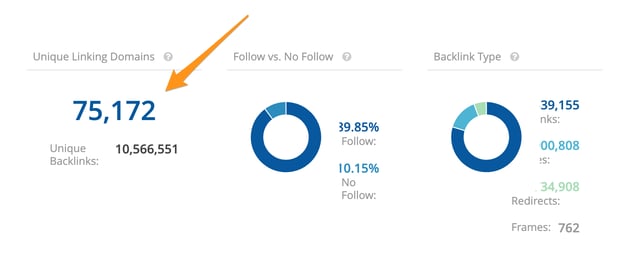
Backlink URLs
Web addresses of actual pages that contain links to your site.
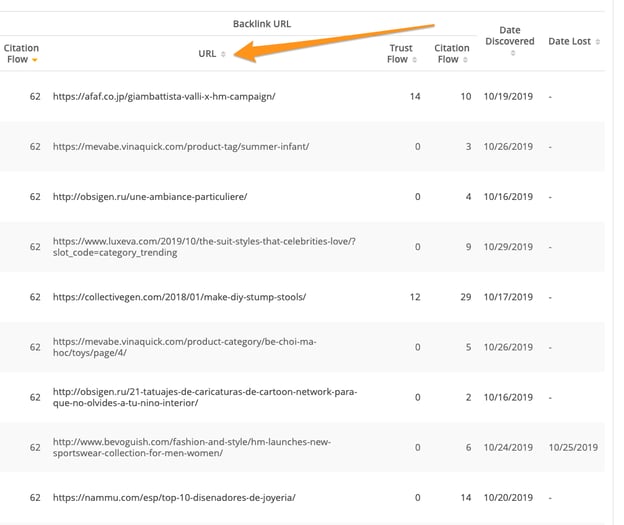
Follow vs. Nofollow Links
Although search engines recognize both link types, it’s the followed links that carry the most SEO value. Because of this, you must also review the ratio of a follow vs. nofollow links pointing to your site.

Links to the Homepage vs. Deep Links
Typically, the homepage attracts the majority of links. At the same time, deep links help your specific pages rank higher in search engines. I always recommend reviewing the ratio between the two and spotting any inconsistencies or unnatural breakdowns in the link profile.

Lost Links
Just as the site will acquire links over time, it will also lose some. A linking site might remove the reference or the page containing a link, resulting in that backlink no longer existing. Monitoring lost links will help you assess the changes to your link profile. It’s also a great way to spot pages that might need attention due to lost links.
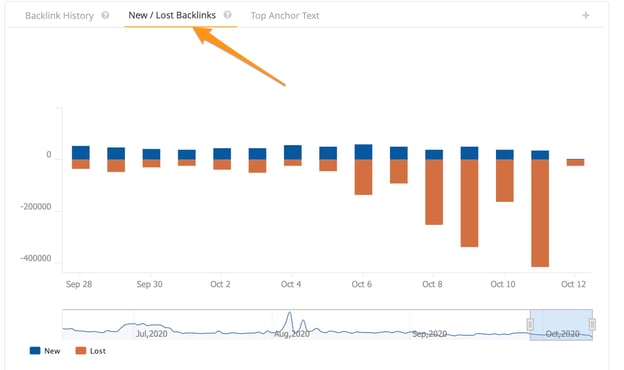
How to Use That Link Data to Evaluate the Backlink Profile
We’ve covered what backlink analysis is, what information you need to collect to conduct it, and where to find it. Now, let’s see how you can use it to evaluate your (or a competitor’s) backlink profile for three criteria:
- Analyze the link profile’s strength,
- Find new backlink opportunities, and
- Identify any potentially harmful links.
As before, we’ll be using seoClarity to access and evaluate the data.
#1. Analyzing Link Profile's Strength
As I’m sure you know, it’s not the volume of links that makes a site seem more authoritative, but the quality of them. This means that a single strong backlink coming from an authoritative source in your industry will be worth more than ten generic mentions.
As a result, it’s good to start the backlink analysis process by evaluating a site’s link profile’s strength.
Here’s how to do it.
Step 1: Evaluate the number of backlinks to the site.
Look at the total number of links and how many unique domains reference the site you’re researching. As I mentioned above, seeing many links does not automatically mean that a site has a strong link profile. However, it suggests that it has been acquiring links for some time and gives you an idea of their link profile’s size.
Step 2: Review the trust flow of the backlink URLs.
Next, go deeper to discover the actual strength of those links. One way to do it is by reviewing the trust flow of each linking URL.
Trust flow is a metric developed by Majestic that evaluates a website’s trustworthiness based on the quality of its backlinks. In other words, pages with more authoritative links pointing to them will have a higher trust flow.
In turn, any links pointing from a page with higher trust flow will naturally pass more authority.
Step 3: Review target URLs.
Finally, look at what pages those authoritative backlinks point to. Do they link to high-value pages or less important assets? The former might be an indication of a firm link profile.
#2. Finding New Backlink Opportunities
As we’ve discussed above, backlink analysis can also help you spot new opportunities and even link building strategies to use.
Often, when evaluating a competitor’s backlink profile, you may spot links that you could recreate as well. These could be business profiles that you didn’t think of, or guest posts that you could place as well. There are many opportunities.
Similarly, you can discover a particular link building technique that you haven’t tried so far, but are easy to execute.
To uncover those, aside from the analysis above, you need to also look at backlink types. This metric splits that entire link profile by a type of a link — a text placement, an image, a redirect, and so on.

I admit that sifting through those records can be time-consuming. However, this is one of the simplest ways to uncover new links that you could add to your link profile.
#3. Identifying Potentially Harmful Links
Over time, your site will acquire some low-quality links. This is normal, and, as I believe, Google discounts those links automatically.
The situation is different when there are too many of them. In this case, the search engine might penalize your site for spammy link practices.
Before we move on, it’s worth mentioning what a spam link is.
A spam link is a link to your site placed on a low-quality, irrelevant or openly trash site.
Many such links come from sites that scrape content. Others, from blog networks, created purely to sell links, and so on.
What’s important is that Google might consider those links against the webmaster guidelines and penalize the site they point to.
As a result, you should regularly evaluate your link profile for spam backlinks.
Let me show you how to do it.
Step 1: Look at your backlink history for unnatural spikes in links.
No commercial site suddenly receives thousands of links a day. Seeing a sudden spike in backlinks may indicate either scraping your content or a negative SEO attack.
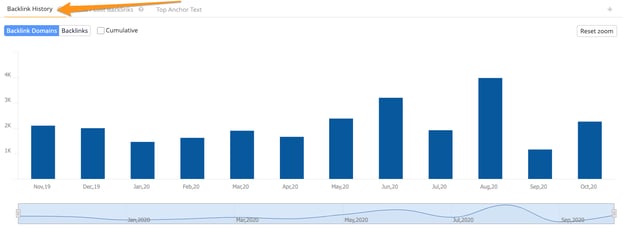
Step 2: Review anchor text.
Spam links often include irrelevant anchor text. Evaluate anchor text of links pointing to your site to spot any strange references.
Visit those sites to establish whether these seem genuine or not.
Step 3: Look for potentially spam CTLDs.
Similarly, many spam links will come from locations you’d not expect to receive links from. These can vary from site to site, so it’s worth reviewing CTLDs linking to you.
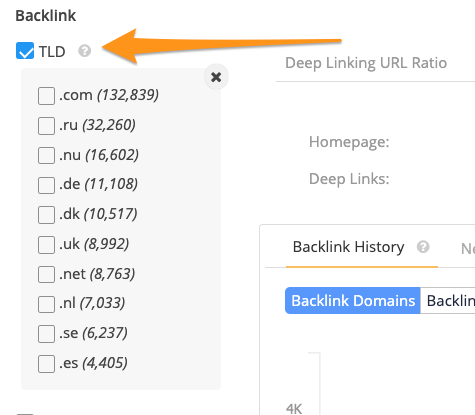
Key Takeaways
- Links remain one of the most important SEO ranking factors.
- To build links, you first must understand your existing link profile.
- As part of the backlink analysis, you should also conduct competitive analysis, where you evaluate the links of your competitors.
- In the post, I’ve outlined the information that you need to collect for such an analysis, and how to conduct it on your and the competitors’ sites.
Want to see how seoClarity can help boost your SEO? Book a demo and we’ll gladly show you the ins and outs of the platform.







Comments
Currently, there are no comments. Be the first to post one!